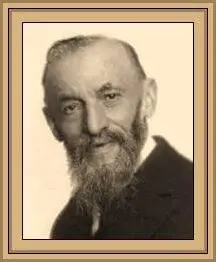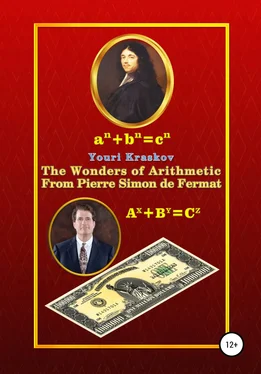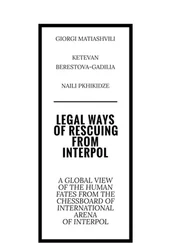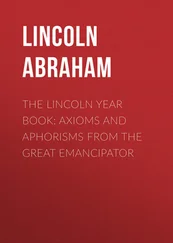If axioms regulate the count, then they are primary in relation to it. However, there is no need to determine their essence through the introduction of new notions because the meaning of any axioms is precisely in their primacy i.e., they are always essentially the boundaries of knowledge . Thus, axioms receive an even more fundamental status, than until now when they were limited only to the foundation of any separate system. In particular, the system of axioms, developed by the Italian mathematician Giuseppe Peano, very closely correspond to the solution of the problem for constructing a counting system although this main purpose was not explained apparently with a hint on justification the essence the notion of number. The scientific community perceived them only as a kind of “formalization of arithmetic” completely not noticing that these axioms in no way reflect the essence of numbers, but only create the basis for their presentation by default i.e. through a count.
If the main content of axioms is to determine the boundaries of knowledge related to generally accepted methods of representing of numbers, then they should be built both from the definition the essence of the notion of number and in order to ensure the strength and stability of the whole science's building. Until now, due to the lack of such an understanding of the ways of building the foundations of knowledge, the question about the essence of numbers has never even been asked, but only complicated and confused.
Pic. 32. Giuseppe Peano

However, now when it becomes clearer and without any special difficulties, all science can receive a new and very powerful impetus for its development. And then namely on such a solid basis, science acquires the ability to overcome with an incredible ease such complex obstacles, which in the old days, when there was no understanding the essence of numbers, they seemed to science as completely impregnable fortresses 36.
3.2. Axioms of Arithmetic
This path was first paved at the end of the 19th century by Peano axioms. 37We will make changes to them based on our understanding the essence of the number.
Axiom 1 . A number is natural if it is added of units . 38
Axiom 2 . The unit is the initial natural number .
Axiom 3 . All natural numbers form an infinite row, in which each
following number is formed by adding unit to the previous number .
Axiom 4 . The unit does not follow any natural number .
Axiom 5 . If some proposition is proven for unit (the beginning of
induction) and if from the assumption that it is true for a natural
number N, it follows that it is also true for a natural number
following N (induction hypothesis), then this sentence will be true
for all natural numbers .
Axiom 6 . In addition to natural numbers, there can exist another
numbers derived from them, but only in the case if they possess all
without exception the basic properties of natural numbers.
The first axiom is a direct consequence from definition the essence of number, so Peano simply could not have it. Now this first axiom conveys the meaning of defining the notion of number to all another axiom. The second, fourth, and fifth axioms are preserved as in Peano version almost unchanged, but the fourth axiom of Peano is completely removed from this new system as redundant.
The second axiom has the same meaning as the first one in the Peano list, but is being specified in order to become a consequence of the new first axiom.
The third axiom is the new wording of Peano's second axiom. The notion of the natural row is given here more simply than by Peano where you need to guess about it through the notion of the “next” number. The fourth axiom is exactly the same as the third axiom of Peano.
The fifth axiom is the same as by Peano, which is considered the main result of the entire system. In fact, this axiom is the formulation the method of induction, which is very valuable for science and in this case allows to justify and build a count system. However, a count is present in one or another form not only in natural numbers, but also in any other numbers, therefore one more final axiom is needed.
The sixth axiom extends the basic properties of natural numbers to any numbers derived from them because if it turns out that any quantities obtained by calculations from natural numbers, contradict their basic properties, then these quantities cannot belong to the category of numbers.
Now arithmetic gets all the prerequisites in order to have the status the most fundamental of all scientific disciplines. From the point of view the essence of a count everything becomes much simpler and more understandable than until now. On the basis of this updated system of axioms there is no need to “create” natural numbers one after another and then “prove” the action of addition and multiplication for the initial numbers. Now it’s enough just to give names to these initial numbers within the framework of the generally accepted number system.
If this system is decimal, then the symbols from 0 to 9 should receive the status of the initial numbers composed of units in particular: the number “one” is denoted as 1=1, the number “two” is denoted as 2=1+1, the number “ three ” as 3=1+1+1 etc. up to the number nine. Numbers after 9 and up to 99 adding up from tens and ones for example, 23=(10+10)+(1+1+1) and get the corresponding names: ten, eleven, twelve … ninety-nine. Numbers after 99 are made up of hundreds, tens and units, etc. Thus, the names of only the initial numbers must be preliminarily counted from units. All other numbers are named so that their quantity can be counted using only the initial numbers. 39
All arithmetic actions are components of the definition the essence of the number. In a compact form they are presented as follows:
1. Addition: n=(1+1…)+(1+1+1…)=(1+1+1+1+1…)
2. Multiplication: a+a+a+…+a=a×b=c
3. Exponentiation: a×a×a×…×a=a b=c
4. Subtraction: a+b=c → b=c−a
5. Division: a×b=c → b=c:a
6. Logarithm: a b=c → b=log ac
Hence, necessary definitions can be formulated in the form of axioms.
Axiom 1 . The action of adding several numbers (summands) is their
association into one number (sum).
Axiom 2 . All arithmetic actions are either addition or derived from
addition.
Axiom 3 . There are direct and inverse arithmetic actions.
Axiom 4 . Direct actions are varieties of addition. Besides the addition
itself, to them also relate multiplication and exponentiation.
Axiom 5 . Inverse actions are the calculation of function arguments.
These include subtraction, division and logarithm.
Axiom 6 . There aren’t any other actions with numbers except for
combinations of six arithmetic actions . 40
3.2.3. Basic Properties of Numbers
The consequence to the axioms of actions are the following basic properties of numbers due to the need for practical calculations:
Читать дальше






![Theresa Cheung - The Dream Dictionary from A to Z [Revised edition] - The Ultimate A–Z to Interpret the Secrets of Your Dreams](/books/692092/theresa-cheung-the-dream-dictionary-from-a-to-z-r-thumb.webp)






